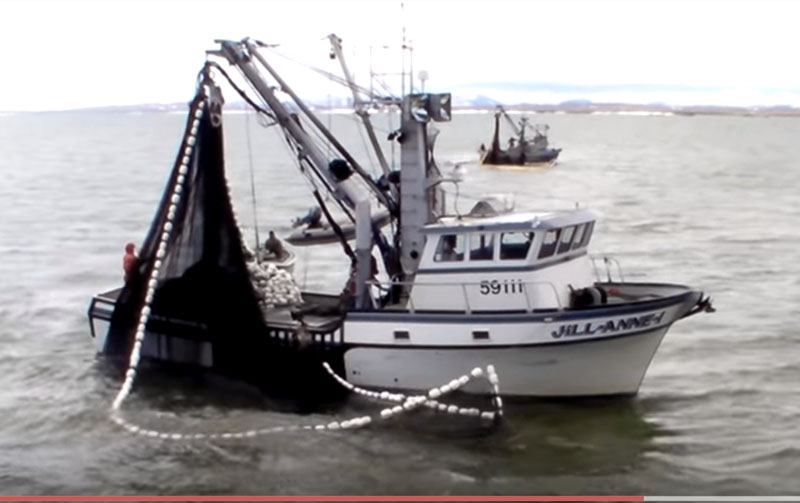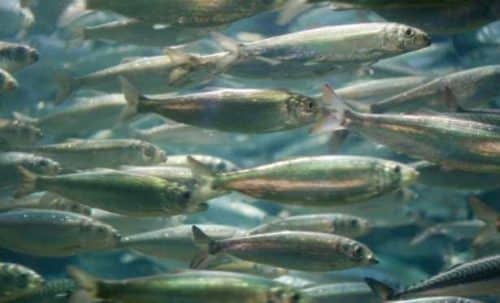 Purse seine herring harvesters in Togiak in Southwest Alaska netted more than 18,017 tons of fish through May 10, in a fishery including six gillnetters and 16 purse seiners, said biologists with the Alaska Department of Fish and Game.
Purse seine herring harvesters in Togiak in Southwest Alaska netted more than 18,017 tons of fish through May 10, in a fishery including six gillnetters and 16 purse seiners, said biologists with the Alaska Department of Fish and Game.
Since only two companies were purchasing gillnet fish, the gillnet harvest is confidential, biologists said.
The fishery ended on May 11.
This year’s buyers from purse seiners were identified as Silver Bay Seafoods, Icicle Seafoods, Trident Seafoods and North Pacific Seafoods. Silver Bay and Icicle were also purchasing fish from the gillnetters.
Harvest allocations for 2015 include 20,309 tons, or 70 percent of the harvest) for the purse seine fleet, while the gillnet fishery is allocated 8,704 tons, or 30 percent.
The spawn on kelp allocation is 1,500 tons, Togiak sac roe is 29,112 tons, and the Dutch Harbor food and bait allocation is 2,184 tons.
The fishery usually lasts about 10 days for purse seiners, but a little longer for the gillnet harvesters.
ADF&G area biologist Tim Sands, in Dillingham, said some deadloss was observed and that the agency had also received a tip that at least one company was doing partial pumps of sets.
“The combination was enough that the department wanted to remind participants what is required and expected,” Sands said. “We were in communication with public safety folks (Alaska State Troopers) that were monitoring the herring fishery and we made them aware of our concerns,” he said. But, Sands, added that he did not think this was a widespread issue and would not quantify the amount of deadloss as a lot. “The sole purpose of mentioning it in the announcement was to remind industry that we need to work together to sustainably harvest this excellent resource and don’t want any distractions that would bring discredit to the fishery,” he said.
Sands said that he understood that a company samples the set and decides then whether to buy it or not, but if they decide to buy it, then they should buy the whole thing, he said.
Apparently some vessels don’t do this. This might be because they run out of room on tenders for the fish or because as they are pumping the set they keep checking the roe percent and if it gets below what they want, they stop, he said. They want the fish with a high roe percent, so if the roe percent drops they don’t want the fish.
“However, to pump these sets they have to crowd the fish and dry up the net, and this can kill some or most of the fish. This is a problem we want to avoid,” he said.
Fishermen’s News Online grants permission to the Alaska Native News to post selected articles. Read More at: Fishermen’s News Online.






